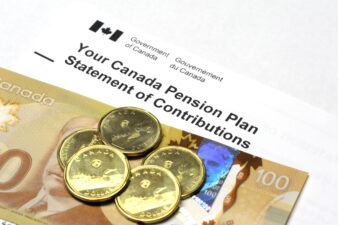The Registered Retirement Savings Plan (RRSP) is a retirement account introduced by the Government of Canada back in 1957. This investment vehicle was created to provide Canadians with tax breaks and encourage savings that will help secure their retirement.
The RRSP is a tax-deferred account. This means any contributions to the account can be used for tax deductions. For example, if you earn $80,000 a year, you are eligible to contribute 18% of this amount, or $14,400 to the RRSP. The Canada Revenue Agency (CRA) will then calculate your annual taxable income as $65,600 ($80,000-$14,400).
You need to understand that RRSP contributions are tax deductible. However, you need to pay taxes to the CRA when you withdraw these funds at a later date. The RRSP withdrawal age is 71 years, which indicates that your income in retirement should be lesser than what you earn right now. Hence, the tax rate on RRSP withdrawals will be significantly lower.
Do not overcontribute to your RRSP
The RRSP is one of the best ways to defer CRA taxes, allowing millions of Canadians to grow wealth over the long term. However, you need to be wary of one recurring mistake that will attract a penalty from the Canada Revenue Agency.
Some Canadians tend to overcontribute to the RRSP to take advantage of tax deductions. The Canada Revenue Agency has stated that RRSP contributions should be the lower of 18% of your total annual income and the maximum contribution limit for the year.
If you earn $175,000 a year, 18% of this amount would be $31,500. However, the maximum RRSP contribution for 2020 stands at $27,230, and this is the maximum amount that can be allocated towards your account.
If you overcontribute, you will have to pay a penalty to the CRA. So, if you consider the above example and contribute $31,500 towards your RRSP, the excess amount will be taxable, minus $2,000. In this case, you will have to pay taxes on $2,270 ($31,500-$27,230-$2,000). The CRA provides Canadians with a $2,000 buffer for overcontribution.
This amount will attract a 1% tax each month for as long as it sits in your RRSP. In this case, the monthly tax penalty paid to the CRA will amount to $22.7. Overcontributions to the RRSP severely compromise the tax-sheltered status of your RRSP account.
How to maximize your returns
After calculating the relevant amount available for your RRSP contributions, you can allocate the capital and buy dividend-paying stocks. This income-generating asset will increase investor wealth significantly over time and may help accelerate your retirement.
The current macro-economic situation is volatile, to say the least. So, you need to focus on safeguarding your capital investment, which means identifying low-beta stocks is key. Investors can buy recession-proof utility stocks such as Fortis (TSX:FTS)(NYSE:FTS) for their RRSP.
Fortis is a Canada-based utility giant with a market cap of $24.7 billion and an enterprise value of $50.7 billion. It has a huge presence in North America and serves customers in Canada, the U.S., the Caribbean, and Central America.
Fortis stock has a beta of 0.15, which indicates it is insulated against the wild swings of broader markets. In the Q1 call, Fortis CEO Barry Perry stated approximately 82% of the company’s annual revenue is protected by regulatory mechanisms or residential sales. This demand is expected to increase amid the pandemic and offset any decline in sales associated with the economic slowdown.
Fortis has a conservative approach that helps it comfortably manage economic cycles. At the end of April 2020, it had over $5 billion in liquidity, an enviable position indeed. This will help the company easily sustain dividend payouts. Fortis aims to increase dividends at an annual rate of 6% through 2024.
Fortis stock currently has a forward yield of 3.54%. In the last five years, shares have also gained 42% in market value.
The Foolish takeaway
As seen above, you need to be careful while contributing to your RRSP. Instead of going overboard, Canadians can look to allocate top-quality stocks to their RRSP and benefit from a recurring dividend stream and capital appreciation.







